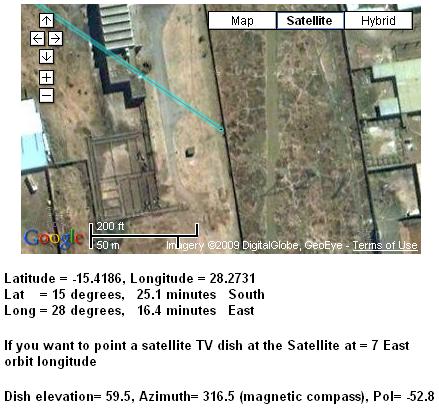| Home Login Register |
| Satellite Internet forum › Satellite Connection in Africa › iDirect 3000 Modem Installation |
|
Pages: 1
|
iDirect 3000 Modem Installation(Read 8879 times) |
|
francyb
Member
★★ Offline Posts: 25 Zambia |
Jan 21st, 2009 at 1:03pm
|
| Back to top |
IP Logged
|
|
Eric Johnston
YaBB Moderator
★★★★★ Offline Posts: 2109 |
Reply #1 - Jan 21st, 2009 at 1:11pm
|
| Back to top |
IP Logged
|
|
francyb
Member
★★ Offline Posts: 25 Zambia |
Reply #2 - Jan 21st, 2009 at 1:47pm
|
| Back to top |
IP Logged
|
|
Eric Johnston
YaBB Moderator
★★★★★ Offline Posts: 2109 |
Reply #3 - Jan 21st, 2009 at 3:30pm
|
| Back to top |
IP Logged
|
|
francyb
Member
★★ Offline Posts: 25 Zambia |
Reply #4 - Feb 4th, 2009 at 9:40pm
|
| Back to top |
IP Logged
|
|
Eric Johnston
YaBB Moderator
★★★★★ Offline Posts: 2109 |
Reply #5 - Feb 4th, 2009 at 11:55pm
|
| Back to top |
IP Logged
|
|
francyb
Member
★★ Offline Posts: 25 Zambia |
Reply #6 - Feb 5th, 2009 at 9:21am
|
| Back to top |
IP Logged
|
|
Eric Johnston
YaBB Moderator
★★★★★ Offline Posts: 2109 |
Reply #7 - Feb 5th, 2009 at 9:47am
|
| Back to top |
IP Logged
|
|
francyb
Member
★★ Offline Posts: 25 Zambia |
Reply #8 - Feb 5th, 2009 at 10:10am
|
| Back to top |
IP Logged
|
|
francyb
Member
★★ Offline Posts: 25 Zambia |
Reply #9 - Feb 21st, 2009 at 2:19pm
|
| Back to top |
IP Logged
|
|
Ex Member
Ex Member
|
Reply #10 - Mar 1st, 2009 at 7:48pm
|
| Back to top |
IP Logged
|
|
Pages: 1
|
Email me: eric@satsig.net
Powered by YaBB 2.5.2!
YaBB Forum Software © 2000-. All Rights Reserved.
Disclaimer, Terms of Use and Privacy Forum User Agreement Forum rules Cookie policy.



